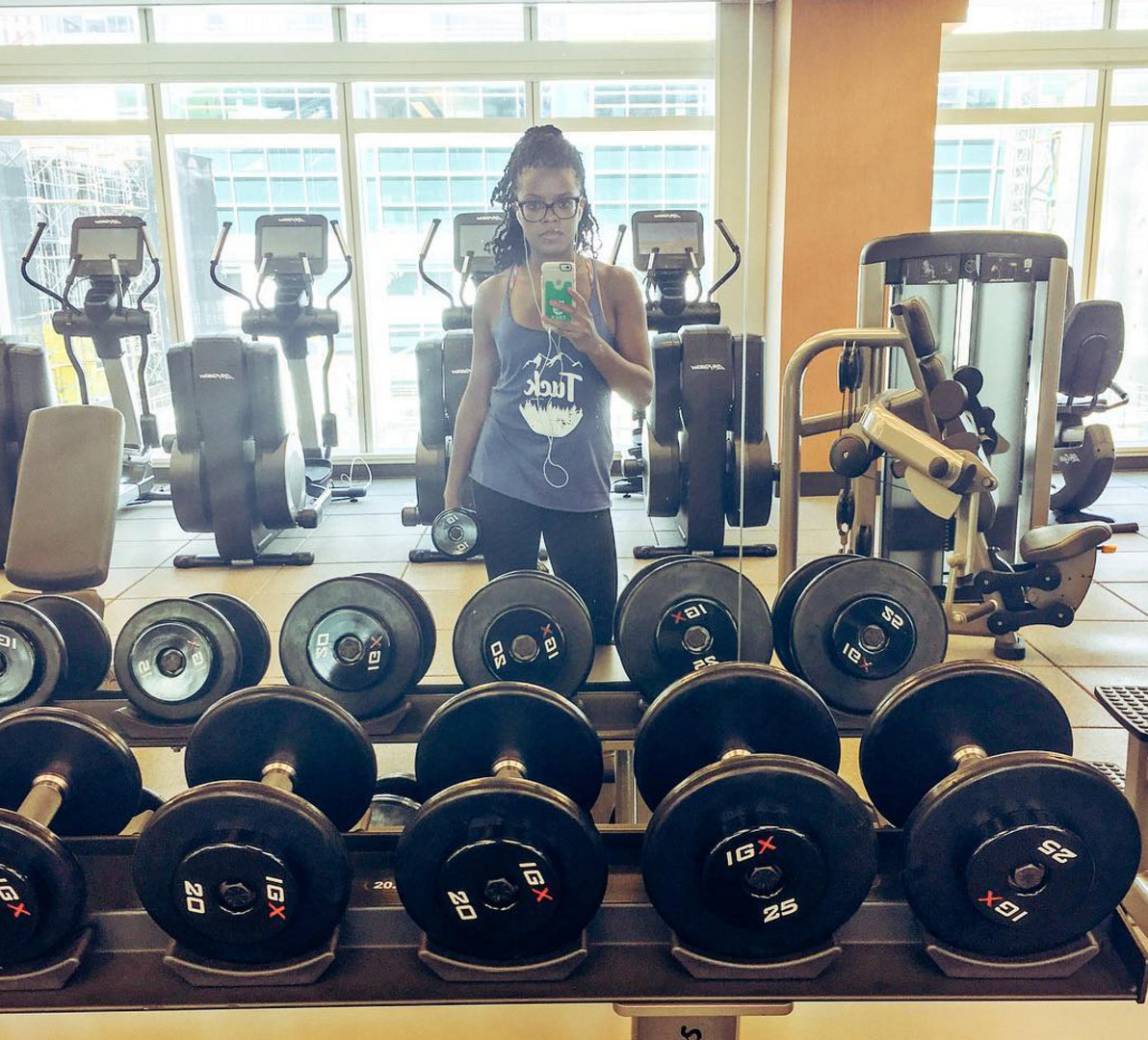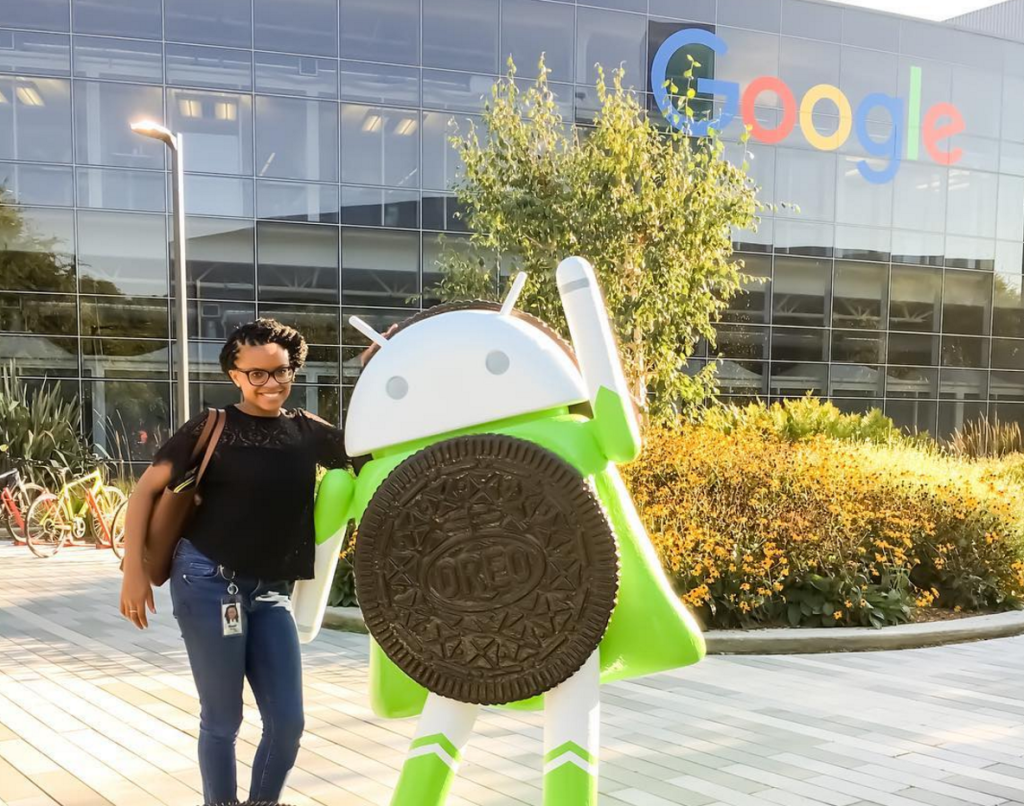Inclusion and Diversity. The two buzzwords go hand in hand, and are on every company’s to-do list. Certainly, both are worthy goals, but they are far more than just a layer of training and a box to be checked. It’s one thing for an organization to want diversity, but it takes a clear vision and a disciplined approach to ensure it evolves that way. To be truly inclusive, which then fosters diversity, an organization needs to breathe those values from its core.
Nikki Burns, the newest member of the Positive Tracks Board, puts intention behind the conversation on inclusion. She puts action behind the belief that diversity is good, and that we find strength in our differences.
Nikki came to Positive Tracks in 2015, as a Tuck School of Business Fellow. We loved her so much we couldn’t let her go, even after graduation when she started her full-time job at Google, where she is a strategic partner developer. Despite the big job and the move across the country, she still finds time to serve on the Positive Tracks Board, where this summer she drove the creation of our Inclusion Vision and Strategy.
Even though superheroes are our spirit guides, you don’t need to feel like a superhero to be part of Positive Tracks. It’s more about the hero inside each of us, the part that wants to help others and to be part of something bigger. We seek to engage youth with diverse backgrounds, including ethnic, and socioeconomic, because “getting active and giving back” is good and healthy for everyone. Nobody believes that more than Nikki Burns.
Helping underserved communities is personal for Nikki. “I understand the issues plaguing our communities in areas where children’s opportunities can be limited based on where they are from. If it hadn’t been for my parents asking questions and taking several leaps of faith, I would never be where I am today. I always think: How can we bring parents and children information about what options they have? How do we communicate that everyone matters and everyone deserves a pathway for success regardless of skin color?”
children’s opportunities can be limited based on where they are from. If it hadn’t been for my parents asking questions and taking several leaps of faith, I would never be where I am today. I always think: How can we bring parents and children information about what options they have? How do we communicate that everyone matters and everyone deserves a pathway for success regardless of skin color?”
AN ACTIVE EDUCATION
As the youngest of three kids, growing up in Newburgh, NY, Nikki didn’t have much choice in getting active. “I put on my first karate suit at two years old,” she recalls, of her days getting dragged along by parents who loved to engage in community through church and martial arts. She also did ballet, tap and all the sports she could. “My parents made it happen despite costs,” she says.
She earned a scholarship at Tuxedo Park School and then The Hill School in PA. There she played lacrosse and field hockey, and her speed caught the track coach’s attention. When he convinced her to try out for track junior year, she started breaking records. “Everything changed in a matter of months,” she recalls. Colleges recruited her and offered scholarships, but she put education ahead of all else in her decision, applying early decision to Brown University. “When I got in, I didn’t consider any other options…it was a gut match,” she says.
Like most Ivy League schools, Brown does not offer athletic scholarships, so Nikki worked while being a full-time student athlete. She also helped develop and grow a mentoring/tutoring program, Makin’ Moves, a program that pairs high-school student-athletes in the greater Providence, RI community with current Brown athletes who are passionate about mentoring youth.
After graduating with a degree in Commerce, Organizations and Entrepreneurship, Nikki went on to complete a leadership development program at Chase and spent the bulk of her six years doing strategy work at Chase Wealth Management. “We were coming off the heels of a financial crisis, at a time when banks were under intense scrutiny.” Taking the job to the next level meant moving-fast, being transparent and driving efficiency.
By the time Nikki started at the Tuck School of Business, she was already connecting her business skills to her passion, studying the intersection of youth, education and society. “If I could apply the skills and tools I learned in the business sector to help disadvantaged youth, it would be powerful and meaningful,” she says.
 While at Tuck, Nikki learned about Positive Tracks. The mission resonated with her, as did the opportunity to work with and engage with kids. She applied and was picked for the Tuck Fellows position, which includes a one-year seat on the Positive Tracks Board. She immediately put her strategic mind to work, asking questions like: “Who else is out there? What do we need to do to grow? How do we connect to a bigger area?”
While at Tuck, Nikki learned about Positive Tracks. The mission resonated with her, as did the opportunity to work with and engage with kids. She applied and was picked for the Tuck Fellows position, which includes a one-year seat on the Positive Tracks Board. She immediately put her strategic mind to work, asking questions like: “Who else is out there? What do we need to do to grow? How do we connect to a bigger area?”
PUTTING INTENTION BEHIND THE VISION
Despite her busy schedule in her new job at Google, she continues to guide Positive Tracks, asking questions, fueling our words with intention and striving for the goal that all kids can see themselves as being part of Positive Tracks. “I love thinking about how engaging our differences strengthens us. The vision statement encompasses that.”
The inclusion vision statement evolved over several meetings with a team of staff, board members, and youth. It started with a brain dump, whereby everyone wrote down their versions of inclusivity. “We discussed each idea and pulled out the parts we liked most,” says Nikki, who then sifted and streamlined the thoughts into one vision and repeated the process. After three iterations, the vision emerged, and will become part of the Positive Tracks DNA.
“There are many steps to take to see the impact we want to achieve,” explains Nikki. “It’s difficult to measure inclusion. That’s why we are thinking of outcomes and impact, then working backwards to identify actions.”
How will we know the vision is being achieved? “For me it will be having more youth from different regions, and finding partners that work with the areas where we want to make progress,” says Nikki. “Can all kids see themselves as part of Positive Tracks? In striving for that, we will grow our reach.”
